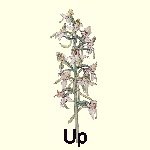|
|
||||||||||||||||||||
|
|
||||||||||||||||||||
 |
|
Please Note: This sectuon is still a work in progress. It may or probably will be updated or amended "Bloody Dacts!", "Dacts should be made to wear condoms", and "They're just one species in my opinion" are just three comments I have heard concerning the Dactylorhiza genus. I started looking more closely at the photos I have taken at numerous sites and, yes, they do confuse, especially where you suspect hybrids being present. The problem is that looking at the photos in field guides never works, for those do not encompass the spectrum of appearances and colours are often wrong. Referring to the written descriptions also has its limitations because much is subjective (such as labellum shape) and there is so much overlap on measurements. I want to understand the genus in order to make something of my photos, but the more I read, the more I needed to read. Perhaps it is best to start at the beginning and list the species that are commonly agreed to grow in the United Kingdom and Ireland. I am not including the Frog Orchid, Dactylorhiza viridis, in this discussion as it is almost alone on a distant branch of the genus.
Only two of these species have a diploid chromosome number (Dactylorhiza fuchsii and D. incarnata), the rest have double that number and are tetraploid; and in all but one this happened during hybridisation of the two diploid species. One can argue that this makes them extremely success hybrids, but most people will regard these rare polyploidy events as instant speciation. The whats, whens, and hows of this come later too. The orchids of Britain and Ireland are the descendants of colonisers arriving here after the Ice Age. No plants growing prior to the glaciation would have survived. The last glacial event in these isles lasted from 29,000 to 11,500 years before present, but it reached only as far south as line roughly from the Humber estuary to the Mid Wales, thus hardier species could have repopulated the tundra that was southern England during this event. As the ice receded these species could colonise further north while other species colonised from what is now the continental mainland. At this time there was no English Channel, and there was flat, low lying land from East Anglia and Yorkshire across to Holland and Denmark; perfect for Marsh-orchids. Consequently, re- population of the British Isles by orchids could proceed from both the south and the east. However once the North Sea as we know it and the English Channel formed around 8,000 years BP this immigration virtually comes to an end. The Irish Sea perhaps opened up further back than 2.5 million years, but to explain Ireland's fauna and flora some form of land bridge at the northern reaches could have temporarily been there after the retreat of the ice. Having mentioned that the tetraploid species all have ancestors ancestors in common, it is no surprise that the tetraploid Marsh-orchids have similar features, and are able to hybridise easily (with some exceptions), producing offspring of intermediate appearance. This explains the comments at the top of the page. Rather than throwing in the towel on the genus, I wanted to find out more and interpret my findings in plain English (as far as possible). While Field guides like Orchids of Britain and Ireland by Anne and Simon Harrap was useful as a starter, I found a number of scientific articles that drilled down into real nature of Dactylorhiza. Foremost authors were John Haggar and Prof. Richard Bateman. Top of Page The two diploid species.
|
|
|
||||||||||||||||||||


